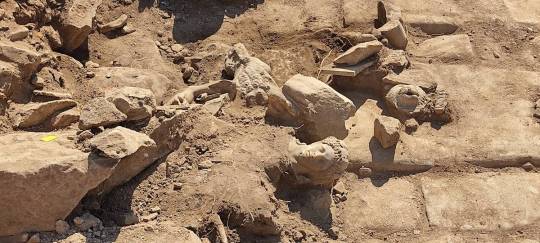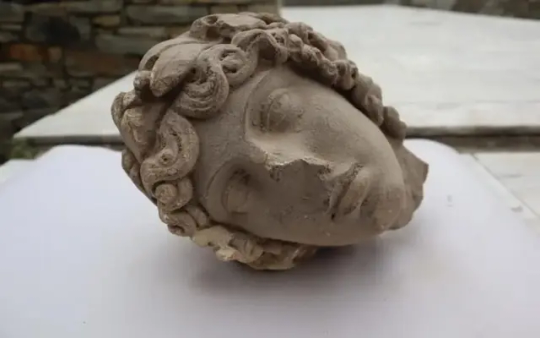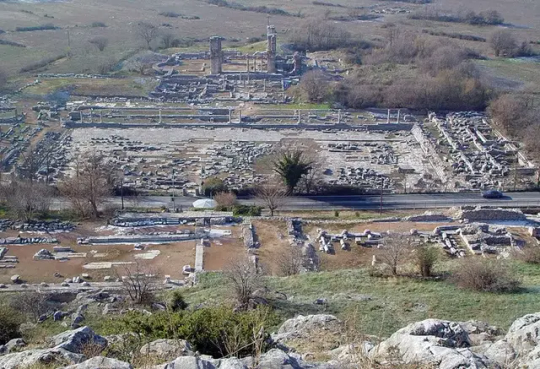#Phyllis and Aristotle
Explore tagged Tumblr posts
Text

Master M.Z. , Aristotle and Phyllis, c. 1500.
9 notes
·
View notes
Text
I love medieval ivories.

Carved ivory casket, Paris, France, circa 1320-1330
from The Victoria and Albert Museum
308 notes
·
View notes
Text



These 13th- and 14th-century aquamanilia from the Metropolitan Museum of Art collection on JSTOR (which includes nearly half a million open access images for everyone) are really something else. Our favorite is the one of Aristotle and Phyllis. Sure, the story behind it is as sexist as you may expect, but we prefer to interpret it as the triumph of woman over insufferable mansplainer.
#medieval art#aquamanile#aristotle#aristotle and phyllis#samson and the lion#shut up aristotle#jstor
674 notes
·
View notes
Text

Phyllis riding Aristotle, Augsburger Georgsspiel, ca. 1486-1520
45 notes
·
View notes
Text

Hans Baldung Grien - Aristotle and Phyllis 1513
#art#woodcut#history#weird#Aristotle and Phyllis#hans baldung grien#legend#humor#satire#Renaissance · Newspapers and illustrations
1 note
·
View note
Text
Now I need to oogle Phyllis riding Aristotle! Lol

Aquamanile in the Form of Aristotle and Phyllis, Bronze, Quaternary copper alloy, South Netherlandish, 14th – 15h century.
389 notes
·
View notes
Text

The Marble Head of Apollo Unearthed in Greece
The excavation, carried out by a group of students of the Aristotle University of Thessaloniki in the archaeological site of Philippi Kavala, brought to light important findings. Among other things, they discovered a rare head of Apollo dating back to the 2nd or early 3rd century AD.
The statue dates back to the 2nd or early 3rd century AD and it probably adorned an ancient fountain.
Natalia Poulos, Professor of Byzantine Archaeology, led the excavation, which included fifteen students from the Aristotle University of Thessaloniki (11 undergraduates, 2 master’s, and 2 PhD candidates), Assistant Docent Anastasios Tantsis, and Professor Emeritus of Byzantine Archaeology Aristotle Mendzo.
Archaeologists say, this year the excavation continued east of the southern main road (decumanus) at the point where it meets the northern axis of the city (the so-called “Egnatia”). The continuation of the marble-paved road was revealed, on the surface of which a coin (bronze phyllis) of the emperor Leo VI (886-912) was found, which helps to determine the duration of the road’s use. At the point where the two streets converge, a widening (square) seems to have been formed, dominated by a richly decorated building.
Archaeologists say evidence from last year’s excavations leads them to assume it was a fountain. The findings of this year’s research confirm this view and help them better understand its shape and function.

The research of 2022 brought to light part of the rich decoration of the fountain with the most impressive statue depicting Hercules as a boy with a young body.
The recent excavation (2023) revealed the head of another statue: it belongs to a figure of an ageneous man with a rich crown topped by a laurel leaf wreath. This beautiful head seems to belong to a statue of the god Apollo. Like the statue of Hercules, it dates from the 2nd or early 3rd century AD and probably adorned the fountain, which took its final form in the 8th to 9th centuries.

In classical Greek and Roman religion and mythology, Apollo is one of the Olympian gods. He is revered as a god of poetry, the Sun and light, healing and illness, music and dance, truth and prophecy, and archery, among other things.
Philip II, King of Macedon, founded the ancient city of Philippi in 356 BC on the site of the Thasian colony of Crenides near the Aegean Sea. The archaeological site was designated a UNESCO World Heritage Site in 2016 for its outstanding Roman architecture, urban layout as a smaller reflection of Rome itself, and significance in early Christianity.
By Oguz Buyukyildirim.


#The Marble Head of Apollo Unearthed in Greece#Philippi Kavala#marble#marble statue#ancient artifacts#archeology#archeolgst#history#history news#ancient history#ancient culture#ancient civilizations#ancient greece#greek history#greek art
213 notes
·
View notes
Text

Jan de Beer Aristotle and Phyllis 1515-20 Pen and brown ink, 275 x 191 mm British Museum, London
77 notes
·
View notes
Text

Aquamanile depicting Phyllis riding Aristotle — a scene from the legend in which Phyllis, Aristotle's lover, humiliates him by riding on his back after he warned Alexander the Great about the dangers of women. Made of copper alloy, this piece originates from the South Lowlands, dating to the 14th-15th century AD.
📸 The MET Museum
#sculpture#art#Aristotle#copper#statue#the metropolitan museum of art#greek mythology#alexander the great
15 notes
·
View notes
Text

Aquamanile in the Form of Aristotle and Phyllis, Bronze, Quaternary copper alloy, South Netherlands, 14th – 15h century.
source: nobrashfestivity
59 notes
·
View notes
Link
It’s probably been done before, though I don’t know of the book if it has, but one could write a terrific book on Marx and his breakups.
The model here would be Phyllis Rose’s Parallel Lives. Instead of a book about five Victorian marriages, however, and the mix of intellectual, personal, and political sparks they emitted, this would be a book about Marx’s intellectual and political divorces. And how each was a critical turning point in his thought and life.
The criterion for inclusion would be that Marx had a personal relationship with these individuals. No chapters on Hegel or Smith or Aristotle. Otherwise it would be too sprawling and insufficiently personal, more of a standard intellectual history rather than the biography of mutual minds that I have in mind.
There would be chapters on Marx and Bauer, Marx and Ruge, Marx and Hess, Marx and Grün, Marx and Feuerbach, Marx and Proudhon, Marx and Bakunin, Marx and Lasalle, and so on. There’d also be a final chapter on Marx’s one enduring love: with Engels.
7 notes
·
View notes
Text
Aquamanile depicting Aristotle's girlfriend, Phyllis, riding him around the garden after Aristotle warned Alexander the Great about women.
Copper Alloy, South Lowlands, 14th-15th century CE

©️📸 The MET Museum
3 notes
·
View notes
Text

Robert Lenkiewicz - Aristotle-Phyllis - Painter with Moira Ryan
8 notes
·
View notes
Text

Aristotle and Phyllis, 1523 by Meister von Ottobeuren
10 notes
·
View notes
Text

Aquamanile depicting Phyllis riding Aristotle — a scene from the legend in which Phyllis, Aristotle's lover, humiliates him by riding on his back after he warned Alexander the Great about the dangers of women. Made of copper alloy, this piece originates from the South Lowlands, dating to the 14th-15th century AD.
©️📸 The MET Museum
0 notes
Text

Aristotle and Phyllis. Lucas van Leyden (1494-1533)
0 notes